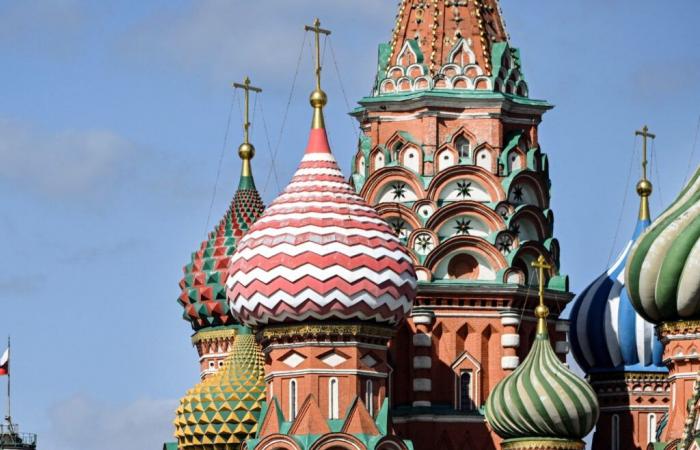Head to Russia. Ivan the Terrible is the first tsar in the country's history. In the middle of the 16th century, the man who was initially Grand Prince of Moscow became Tsar at the age of 17. In a short time, Ivan IV Vasilyevich, intelligent and dynamic, took Russia out of the Middle Ages and modernized it. A formidable warrior, he will found a powerful empire. But the more the years pass, the more dangerous Ivan will become and will plunge Russia into chaos.
Overtaken by the trauma of a solitary childhood surrounded by plotters and never consoled for the death of his first wife, Ivan will become paranoid at the most extreme stage, suspicious, megalomaniac, perverse. Ivan hates everyone and commits countless heinous crimes, each time showing incredible imagination in innovating ways to kill people. Ivan even goes so far as to murder his own son.
A few kilometers from Moscow, in Kolomenskoye, Ivan was born in 1530. When his father died, he was 3 years old and became Grand Prince of Moscow, one of the most powerful Russian states. But as he is too small to govern, it is his mother, Elena, who ensures the regency. Ivan is a curious, lively and cheerful little boy. At the age of 8, he found himself orphaned after the death of his mother, probably from poisoning. And it's his nanny who takes care of him. But one day, she is kidnapped before the little boy's eyes. For him, it is the first in a long series of traumas.
A reforming tsar
When Ivan was 17, the age of majority at that time, he was crowned Tsar of All the Russias in the Moscow Cathedral. He is at the head of the principality of Moscow which he already governs with a mosaic of small states around it. He is also recognized head of the Russian Orthodox Church. And at the same time, Ivan marries a very beautiful young woman, also 17 years old, Anastasia Romanovnadaughter of one of the richest men in Russia.
Calm, sensitive and pious, the Tsarina soothes young Ivan and gives him two children, a girl and a boy. So Ivan has an heir and he is overjoyed. Even though the Tsar is impulsive, he seems to be a happy man and this is evident in his early reign. Ivan IV reforms justice, the army, the administration, but also the taxation of 16th century Russia, finances and the church. It limits the power of the nobles and provincial governors for the benefit of a new Russian elite from the lower nobility.
With him, Moscow is transforming and experiencing a serious facelift. On Red Square, Ivan IV built the famous Basilica of Basil the Blessed with its bulb-shaped domes of all colors. But Ivan IV was not only a reformer, he was also a conqueror. With a reorganized army, he expanded his territory with military victories against peoples who challenged his authority. He also explores Siberia, which is to Russia what America is to Europeans, a new world full of promise.
The Tsar's Secret Police
In 1560, Ivan lost his wife, at only 30 years old. For the Tsar, it was a shock. From there, his sadism and aggression will take over. He sees enemies everywhere, he doesn't trust anyone. Since his childhood, he has lived in fear of a conspiracy. He is convinced that it was the Boyars who poisoned his mother, his first son and his wife. He lashes out against them. The lucky ones will be exiled to the depths of Russia, to inhospitable areas or are locked up in monasteries. But others are hunted by the tsar's secret police. An army of horsemen dressed all in black with a broom and a dog's head as a sign. The Boyars are caught, decapitated with an ax or impaled.
Some are released into the forest in the middle of winter, hunted by wolves. Others must run and dive into rivers until they drown. Their land was confiscated and redistributed to peasants or the lower nobility. In truth, all of Russia was affected by Ivan the Terrible's surge of violence. Ivan and his squadrons torture, massacre with impunity. A toll of more than 10,000 people killed in just 7 years. Others languish in dungeons set up by Ivan. In these gloomy jails, the executioners have a field day. They use the whip, the paddle, needles, pincers, hot coals and ropes to cut the bodies by friction. The Tsar himself participated in these acts of torture. He justifies them as a divine mission.
The more violence escalates, the deeper Russia sinks into crisis
Married eight times, he had one of his wives drowned the day after the wedding, because she was not a virgin. Another is accused of conspiracy and sent to a monastery and her family is executed. Another, unfaithful, must watch her lover be impaled, then ends her days in a convent. Ivan's megalomania and his delusion of persecution have an impact on his way of governing. Many think he is no longer the man for the job. The more the violence escalates, the deeper Russia sinks into crisis.
After 37 years of a reign marked by the seal of terror, Ivan the Terrible died in 1584 during a game of chess, at the age of 53. He is buried in the crypt of the Cathedral of Saint Michael the Archangel in Moscow, alongside his son whom he murdered three years earlier. Even today, the cause of his death remains unknown, although analyzes showed the presence of large doses of mercury on his bones. So, did Ivan IV the Terrible die of poisoning as he so feared? Not sure, because at the time mercury was often taken, especially as a remedy for medical purposes.
For decades, perhaps centuries, the mere mention of the name Ivan IV the Terrible gave anyone goosebumps. It was only during the Soviet era that Ivan the Terrible was finally rehabilitated thanks to a film. A biopic made in 1945 by filmmaker Sergei Eisenstein, the favorite of Joseph Stalin.
>> The Bastards of History. Through a long-format story, Éric Brunet retraces, every week, the life and crimes of a bastard of History. A special collection of our flagship show Enter history.
Read more






